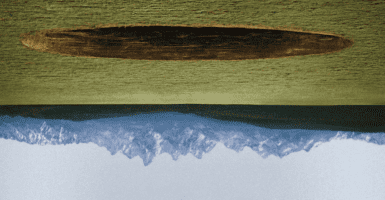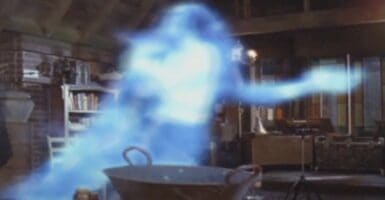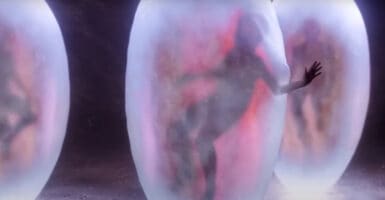NASA Confirms That Voyager 1 Is Soaring Through Interstellar Space
Let's see what's out there.
This article is more than 2 years old
 Voyager 1 already had the distinction of being the man-made object that has travelled further from Earth than anything else we, as a species, have ever flung out into space, but that isn’t going to stop it from travelling deeper and deeper into the unknown. NASA confirms that the probe is indeed now travelling through interstellar space.
Voyager 1 already had the distinction of being the man-made object that has travelled further from Earth than anything else we, as a species, have ever flung out into space, but that isn’t going to stop it from travelling deeper and deeper into the unknown. NASA confirms that the probe is indeed now travelling through interstellar space.
Back in August of 2012, Voyager made international headlines when it was announced that it had actually left the heliosphere. This is essentially a giant bubble of magnetic fields and charged particles that surround our sun and extends far past Pluto. Plasma from the sun, so-called solar wind, pushes against the pressure of the interstellar medium, which is the hydrogen and helium mixture that makes up much of our galaxy. Interstellar space begins where the heliosphere ends.
The shock wave from a recent coronal mass ejection (CME), was actually the key to this discovery. In the wake of the solar eruption, the particles surrounding Voyager started shaking, and this movement allowed scientists back at NASA to calculate the density of the surrounding space—the denser the plasma, the quicker it oscillates. What they found was surprising. Much more dense than the outer layers of the heliosphere, the researchers were able to determine that Voyager had, in fact, entered a new cosmic layer.
Due to the timing of the CME, the NASA team was able to pinpoint August 2012 as the moment when Voyager entered interstellar space. The event happened in March 2013, though the shock wave didn’t hit the probe until April 2013. Combined with another, smaller shock, and calculating Voyager’s speed, they were able to isolate the specific date. This was confirmed just the other day, on July 7, when scientists examined the data from a CME that hit Voyager back in March of this year.
Don Gurnett, an investigator of Voyager’s plasma wave instrument, says, “We’re excited to analyze these new data…So far, we can say that it confirms we are in interstellar space.”
Voyager 1, and its sibling Voyager 2, was launched in September of 1977, and its original mission came to an end in 1980. Since then, the two crafts have been soaring deeper and deeper into space, on a so-called “grand tour” of the outer regions of our solar system. This has provided the world with our best looks as Jupiter, Saturn, Uranus, and Neptune, as well as many of their moons and satellites. Voyager 2, like its twin, is still going. Though it is on a different path, it, too, should enter interstellar space in a few short years.












